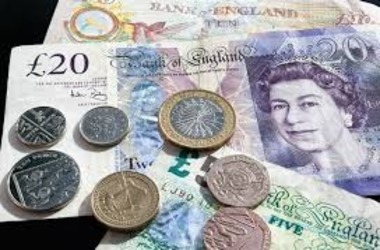 India’s central bank slashed its benchmark interest rate in an unanticipated manner and rolled out measures to enhance liquidity to fight the economic sluggishness sparked by COVID-19 outbreak and ensure financial resilience.
India’s central bank slashed its benchmark interest rate in an unanticipated manner and rolled out measures to enhance liquidity to fight the economic sluggishness sparked by COVID-19 outbreak and ensure financial resilience.
The Monetary Policy Committee of the RBI (Reserve Bank of India) voted 4-2 to slash the repo rate by 75 basis points to 4.40%, Governor Shaktikanta Das.
Two policymakers suggested 50 basis points rate cut.
The MSF rate (marginal standing facility) and the Bank Rate were trimmed to 4.65% from 5.40%. Additionally, broadening the liquidity adjustment mechanism channel, the central bank modified the reverse repo rate to 4%, reflecting a decrease of 90 basis points.
The governor clarified that the reason for modifying the channel was to turn it comparatively unappealing for banks to hold funds with the RBI and rather, utilize the money to aid productive industries.
The bank took these initiatives in the seventh bi-monthly monetary policy meeting, which was earlier planned on March 31, April 1 and 3.
The RBI governor said “This decision and its advancement has been warranted by the destructive force of the corona virus.
A war effort has to be mounted and is being mounted to combat the virus, involving both conventional and unconventional measures in continuous battle-ready mode.”
The governor further stated that “it is worthwhile to remember that tough times never last; only tough people and tough institutions do.”
The MPC also chose to carry on with the accommodative policy until the economy returns back to solid growth and negate the effect of coronavirus, or COVID-19, on the economy.
With the purpose of enhancing liquidity, the RBI slashed the cash reserve ratio, the quantum of funds to be held as reserve compulsorily by banks, by 100 basis points to 3%.
Additionally, the RBI will carry on auctions of targeted term repos with three year maturity period and chpose to boost the accommodation under the MSF to 3% of the statutory liquidity ratio, from 2%.
All of those three initiatives linked to targeted long-term repo functions, CRR and MSF, will increase the total liquidity by INR 3.74 trillion in the system.
This represents 3.2% of India’s GDP.
In addition, the RBI announced a three month relaxation on term loan repayments associated with all banks and financial institutions.
The central bank shunned from providing growth and inflation view as it would be purely dependent on the severity, spread and time period of coronavirus impact.
The government also rolled out an economic stimulus package valued at INR 1.70 trillion as the country stares total lockdown to limit the spread of COVID-19.
Various efforts have been taken to assist low income families, daily laborers, and small firms, who are more susceptible to the 21-day shutdown.
Shilan Shah, an economist at Capital Economics, opined that the stimulus package matching only 0.7% of GDP is not big and huge measures are required to avoid a food crisis for several poor people in the short-term and going forward, to limit the severe economic decline this year from transforming into a downright contraction.




